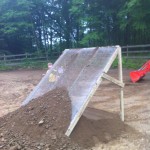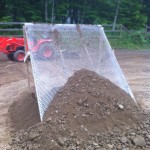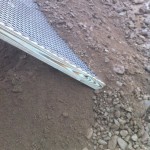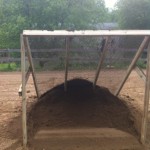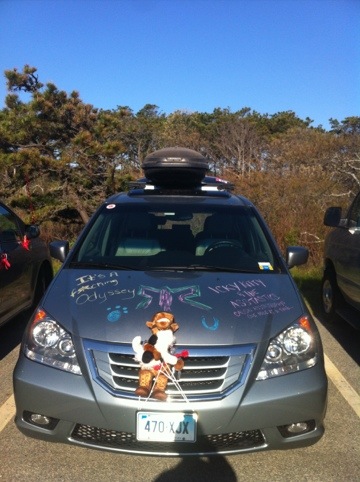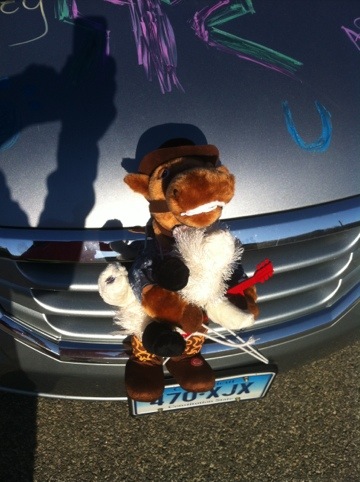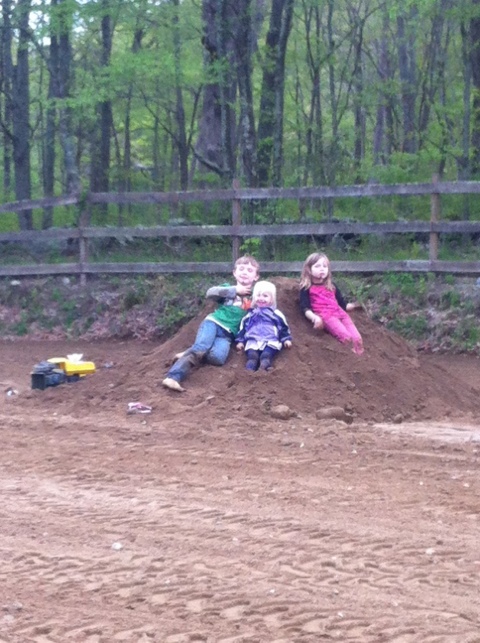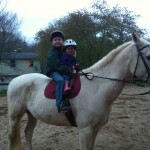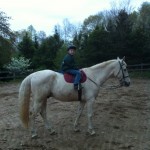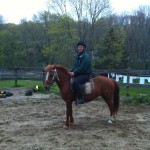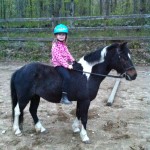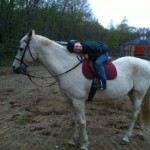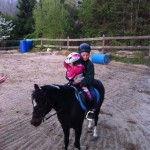Ever since we moved in, we have been working to improve our horse riding arena. We have spent some unknown number of hours using pitchforks and just our hands picking up the rocks out of the arena. Last year, we added 50 tons of sand, but that didn’t really take care of getting rid of all the rocks baseball size and below. Frequently, I use the york rake to condition the arena, and create nice rows of rocks to pick up. Of course, I always end up with some larger piles of rocky sand/soil mix that we have to sort through by hand. There are a lot of things you can buy to expedite this process, but they are REALLY expensive.
Finally, we decided it was time to build our own Grizzly Rock Screen.
I was able to get the expanded metal mesh panels for the screen from Mid Town Steel. CAUTION: the panels are EXTREMELY sharp. I sliced open a finger just touching the surface. Research indicated a 45 degree angle was the ideal angle. The initial design I had planned was going to have the front edge about 2 feet high and put a piece of the screen as a front wall. I decided to build the frame out of treated lumber since a metal frame was going to cost me about $350 in steel plus the cost of a welder. While I am looking for a good project to justify the welder purchase, I decided not keep this simple.
Assembly revealed 2 faults with the design. If the front is 2′ high, and the screen is 8′ at a 45 degree angle, the back is about 8′ high. No problem since my tractor bucket can just clear 8′. Now my math skills were able to figure all that out on the engineering plans. However, actually testing the design after assembly revealed that when the bucket of your tractor goes over something at max height, dumping the contents becomes a problem because there isn’t enough clearance below the bucket.
So after so disassembling, we started design #2. The second design had the front edge directly on the ground and the back legs about 6′ high. Much easier and MUCH more stable. The elevated design was very unstable and probably would have collapsed under the first load of dirt.
As indicated in the pictures, I moved the Grizzly to the arena and gave it a test with a pile I had been collecting in the middle of the arena. If I ever build another, I won’t bother having the expanded metal panels cut; just build the angled bed 8′ square. This will give more room for the 5’6″ bucket under the bed for scooping out the cleaned soil/sand.
While the rock side does build up on the bed and limit the amount that can be processed before clearing the output, it is a significant time saver. The screened sand/soil is clear of everything 1/2″ and larger. Looks like I need to fill up the tractor and spend a few hours in the arena!

